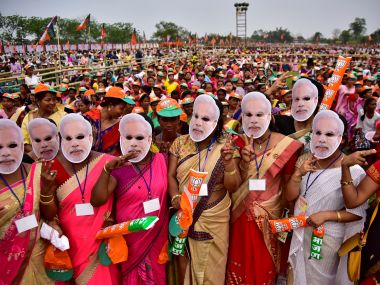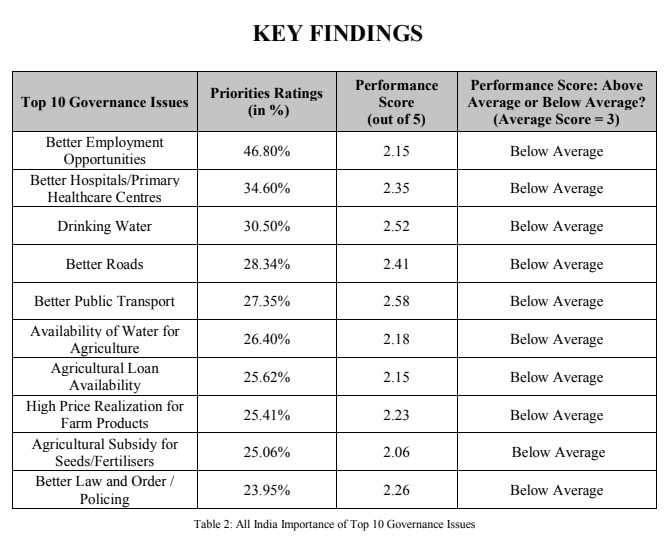The Association for Democratic Reforms (ADR), an NGO formed by professors of the Indian Institutes of Management in 1999, is arguably the most important political organisation working for citizens today. With the rise of ‘political marketing’— and the incredible advances in its sophistication as seen over social media and in the work of immoral consulting firms like Cambridge Analytica — an organisation like ADR, which puts aside party affiliations and gives us core facts, has only become more significant.
Just look at the work they do: They run ‘Election Watch’, which provides background reports on candidates, as well as, winners of elections both for the Lok Sabha and for state Assemblies. These background reports include criminal, financial, educational and income tax details. They also run a ‘Political Parties Watch’, which analyses all donations above Rs. 20,000 received by parties. In a polity where every effort is made to dodge citizen oversight, curtail criticism and limit transparency, ADR is fighting the good fight. If not our wholehearted support, ADR at the very least deserves our attention.

According to the survey, the top two priorities of the 2017 survey remained the same in 2018 — Better Employment Opportunities and Better Hospitals/Primary Healthcare Centers. Reuters
Which brings us to ADR’s latest survey, conducted between October and December 2018, and released in time for the 2019 election. Covering 2,73,487 respondents from 534 of the 543 Lok Sabha constituencies, it is a comprehensive exercise whose results have to be taken seriously. How comprehensive? ADR claims it is likely the largest-ever voter survey conducted in any country.
The survey has many parts, but the headline questions asked of citizens were: What are your top priorities when it comes to government performance? They had to select the answer from 31 items, which included basic needs like drinking water, electricity, food and roads but also included governance items like law and order, terrorism, strong defence/military, and so on. (There was also an ‘other’ option in case there were more items citizens wanted to list; less than 1 percent picked this option—which is also less than the 1.07 percent of NOTA votes in the 2014 election).
Citizens were also asked to rate government performance on these parameters, with each respondent asked to pick two areas where the government showed a ‘good’ performance, two areas where the government was ‘average’ and two others where the government was rated 'poor'. The scores assigned were; five for good, three for average, and one for poor.
It turned out that for all 31 categories of performance, across urban and rural voters, the performance of the ruling government was rated 'below average'. In case you think this is some kind of propaganda exercise, or that citizens are chronically dissatisfied with the government in India, these results can be compared with a similar survey conducted in 2017.
According to the survey, the top two priorities of the 2017 survey remained unchanged in 2018 — Better Employment Opportunities and Better Hospitals/Primary Healthcare Centers. In the 2017 survey, with a rating of 3.17 for employment and 3.36 for healthcare, the government rated above average in both the categories.
In the 2018 survey, employment fell to 2.15 and healthcare fell to 2.35.

Image courtesy: Association for Democratic Reforms
What is also telling is what the top priorities of citizens are. Strong defence and terrorism ranked right at the bottom, only given more importance than the encroachment of public land and lakes, which was dead last. Since this survey was conducted before the Indian Air Force airstrikes on Balakot in Pakistan, citizens also ranked the government performance very low in these items. Terrorism received the second-lowest score of 1.15, and defence received the fourth-lowest score of 1.22.
As for the top 10 priorities, they are what every government and party needs to focus on and these are in order of importance: Better employment opportunities, better healthcare, drinking water, better roads, better public transport, availability of water for agriculture, agricultural loan availability, Higher price realization for farm products, agricultural subsidies for seeds and fertilizers, and better law and order and policing. The next two items have to do with electricity for agriculture and electricity for domestic use.
Roads and electricity have been important points for the ruling party’s propaganda, but this survey finds satisfaction levels for roads are below average at 2.41, and electricity for agriculture and domestic use received below average scores of 2.14 and 2.53 respectively. Better law and order and policing is also something they tout, but the all-India score stands at 2.26, and even citizens in Uttar Pradesh gave the government a below average score of 2.56.
The first element of good governance is good prioritisation, and a willingness to tackle and truly solve the serious problems we face when it comes to employment and healthcare, and the issues our farmers are facing. This survey serves as an indictment of India's entire political class. It doesn’t necessarily say that the ruling government will not be re-elected (there are many reasons to believe that it will), but it is shameful that this is the best citizens can expect, and it shows how much of a compromise choice the current regime is. Let us hope both the center and the opposition pull up their socks before the disappointment of the people of India turns into anger.
Your guide to the latest election news, analysis, commentary, live updates and schedule for Lok Sabha Elections 2019 on firstpost.com/elections. Follow us on Twitter and Instagram or like our Facebook page for updates from all 543 constituencies for the upcoming general elections.

